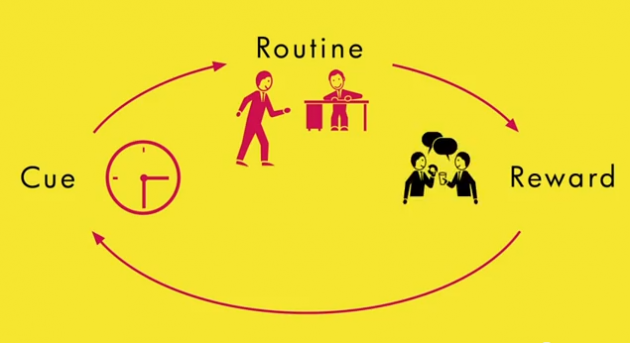The first step to “minding our habits” (as Meryl Streep advised to do in my previous blog) is understanding how habits work and drawing conclusions on why they have a powerful impact on human behavior.
Early in his book, Charles Duhigg points out that good habits are actually an essential part of an individual's existence. While bad habits seem to attract the most attention in a typical discussion concerning performance, good habits quietly perform their role without much notice. However, their importance should not be diminished--the human brain would be unable to effectively function without the widespread use of good habits.
For example, think about backing your car out of the garage. Most of us can do this task with very little thought or focused attention. However, as I’ve tried to teach my teenagers to perform this task, it’s amazing how much mental energy it takes for them to negotiate all the variables in the process (how much speed, where’s the brake, watch the mirrors, how far to the back wall, etc.) However, after a few dozen times, they (and most other people) can perform this task with very little thought.
So, good habits empower humans to perform hundreds of tasks each day with very little mental energy and focus. If we had to think about each of these behaviors every time we did them, even the basics of life would be debilitating.
However, anything that has the capacity for this much good also has the power to create and sustain undesirable actions. Bad habits are just as strong as good habits. Once the brain goes on autopilot, it is very difficult to get it out of what Duhigg calls the “Habit Loop.”
The Habit Loop is the way of explaining what happens in the brain as a habit is executed. The following diagram helps describe this process:

The diagram above is fairly intuitive—the cue is something that your
brain notices, the routine is something you automatically do to solve the
problem, and the reward is some benefit you get for solving the problem.
For example, Duhigg points out that most of us brush our teeth as the result of the habit loop. When we wake up in the morning, the surface of our teeth feels fuzzy (the cue). To solve the problem, we brush our teeth (the routine). After brushing our teeth, our mouths feel fresh, minty, and clean (the reward). This good habit leads to healthy teeth.
As you probably guessed, bad habits follow the same process. A cue ignites the brain’s craving for a certain reward and launches a routine that quickly and efficiently makes the reward a reality. Duhigg does a great job of explaining the bad habit process in the following video:
So, the key to mastering habits is recognizing that certain cues exist and these cues lead the brain to anticipate a certain reward. This craving for the reward can be strong and unrelenting--so much so that an individual's willpower to change is, in the long term, rendered ineffective. To change a habit, the habit loop must be disrupted by altering the routine.
Once you watch the video and think about how this process works, take some time to identify one of two habits you’d like to change. As the author suggests, sketch out your own habit loop and try to diagnose the cues, routines, and rewards that make your habit come to life.
In our next discussion, I’ll show you how understanding the habit process can make you a more effective sales person (why do your company’s clients do what they do?) and a more effective coach (why do your agents do what they do.)
Join the WorkPuzzle Discussion at the Tidemark Online Community (TMOC)
Engage in the WorkPuzzle discussion by joining the TMOC private social network. Commenting on a public blog like WorkPuzzle can be a little intimidating, so why not join the discussion inside the privacy of the TMOC discussion group?
By joining TMOC, you'll get to see who else is in the group and your comments will only be seen by those whom you trust. Joining TMOC is quick, easy, and free (no kidding…this takes less than 2 minutes). To get started, click here.
Already of a member of TMOC? If so, join the WorkPuzzle Dialog Group by clicking on the WorkPuzzle Group icon on the left side of your TMOC homepage. Questions? Email the WorkPuzzle editor (workpuzzle@hiringcenter.net) and we'll walk through the process.
 Editor's Note: This article was written by Ben Hess. Ben is the Founding Partner and Managing Director of Tidemark, Inc. and a regular contributor to WorkPuzzle.
Editor's Note: This article was written by Ben Hess. Ben is the Founding Partner and Managing Director of Tidemark, Inc. and a regular contributor to WorkPuzzle.




Comments